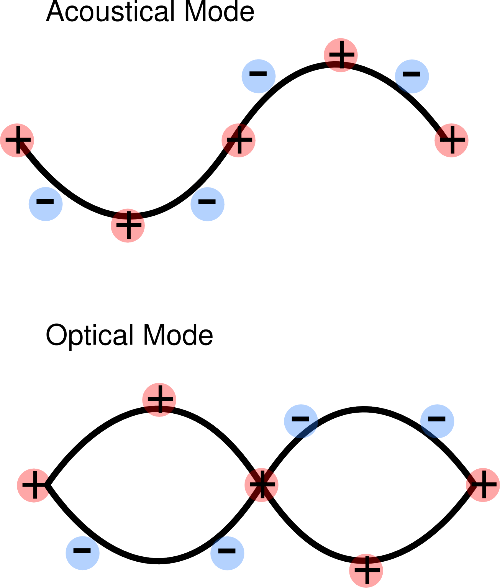Free Courses Sale ends Soon, Get It Now


Free Courses Sale ends Soon, Get It Now



Disclaimer: Copyright infringement not intended.
Context
Phonons: Background and Description
Phonons in Crystals
Defining Phonons
Phonons are collective atomic vibrations, or quasiparticles, that act as the main heat carriers in a crystal lattice. The very quietest sounds of all consist of individual — and indivisible — phonons.
Types of Phonons
Acoustic Phonons and Optical phonons

Phonons and Photons
Extra Information
Recent Research: Building Quantum Computer with Phonons
|
Beam-Splitter Beam-splitters are used widely in optics research. Imagine a torchlight shining light along a straight line. This is basically a stream of photons. When a beam-splitter is placed in the light’s path, it will split the beam into two: i.e. it will reflect 50% of the photons to one side and let the other 50% pass straight through. While it seems simple, the working of a beam-splitter actually draws on quantum physics. If you shine a million photons at it, it will create two beams, each of 500,000 photons. We can then reflect these two beams to intersect each other, creating an interference pattern (recall Young’s double-slit experiment). But researchers have found that an interference pattern appears even when they shine photons at the beam-splitter one by one. What are the photons interfering with? The answer is themselves. This is because a) particles can also behave like waves, and b) until an observation is made, a quantum system exists in a superposition of all its possible states (like a qubit being partly ‘on’ and partly ‘off’ at the same time). So when the single wave interacts with the beam-splitter, it enters a superposition of the two possible outcomes – reflected and transmitted. When these states recombine, an interference pattern shows up. |
Acoustic Beam-Splitter
In a nutshell,
Thus, Phonons could lead to new quantum applications. But it’s still a long way from here to a functional quantum computer that uses phonons as units of information.
|
WHAT ARE QUBITS? Quantum computers use qubits as their basic units of information. A qubit can be a particle – like an electron; a collection of particles; or a quantum system engineered to behave like a particle. Particles can do funky things that large objects – like the semiconductors of classical computers – can’t because they are guided by the rules of quantum physics. These rules allow each qubit to have the values ‘on’ and ‘off’ at the same time, for example. The premise of quantum computing is that information can be ‘encoded’ in some property of the particle, like an electron’s spin, and then processed using these peculiar abilities. As a result, quantum computers are expected to perform complicated calculations that are out of reach of the best supercomputers today. Other forms of quantum computing use other units of information. For example, linear optical quantum computing (LOQC) uses photons, the particles of light, as qubits. Just like different pieces of information can be combined and processed by encoding them on electrons and then having the electrons interact in different ways, LOQC offers to use optical equipment – like mirrors, lenses, splitters, waveplates, etc. – with photons to process information. In fact, any particle that can be controlled and manipulated using quantum-mechanical phenomena should, on paper, be usable as an information unit in a quantum computer. |
|
PRACTICE QUESTION Q. Consider the following statements with respect to Phonons: 1. Phonons can travel through empty space. 2. Phonons are bosons and not conserved; they can be created or destroyed in collisions. 3. In acoustic phonons, both positive and negative ions swing against each other. 4. Phonons of different wavelengths can interact and mix when they bump into each other, producing a different wavelength. Which of the above statements is/are correct? (a) Only 1 and 3 (b) Only 2 and 4 (c) 1, 2 and 4 (d) All of the above. Correct Answer: (b) Only 2 and 4 |
https://www.sciencenews.org/article/quantum-mechanics-sound-split-phonon
© 2024 iasgyan. All right reserved